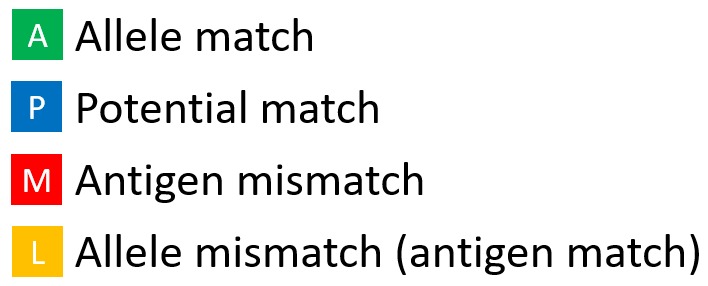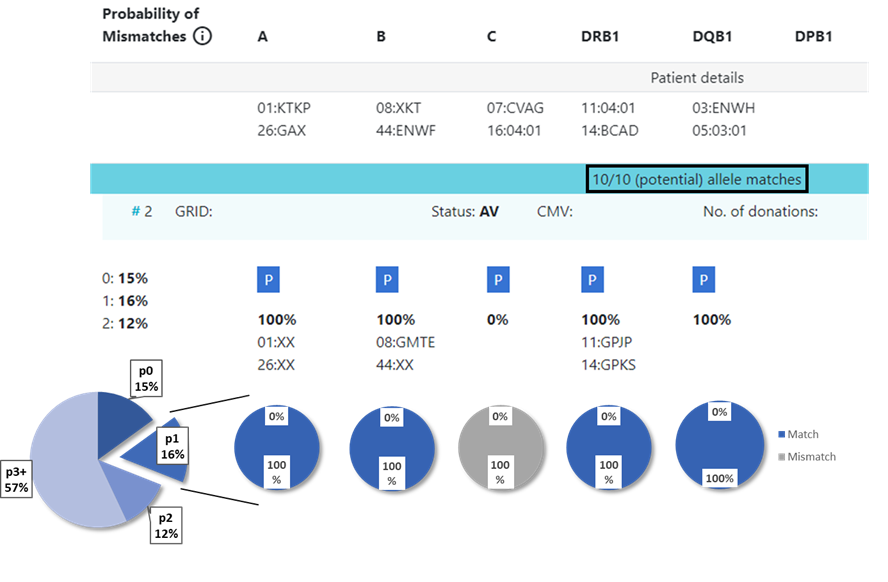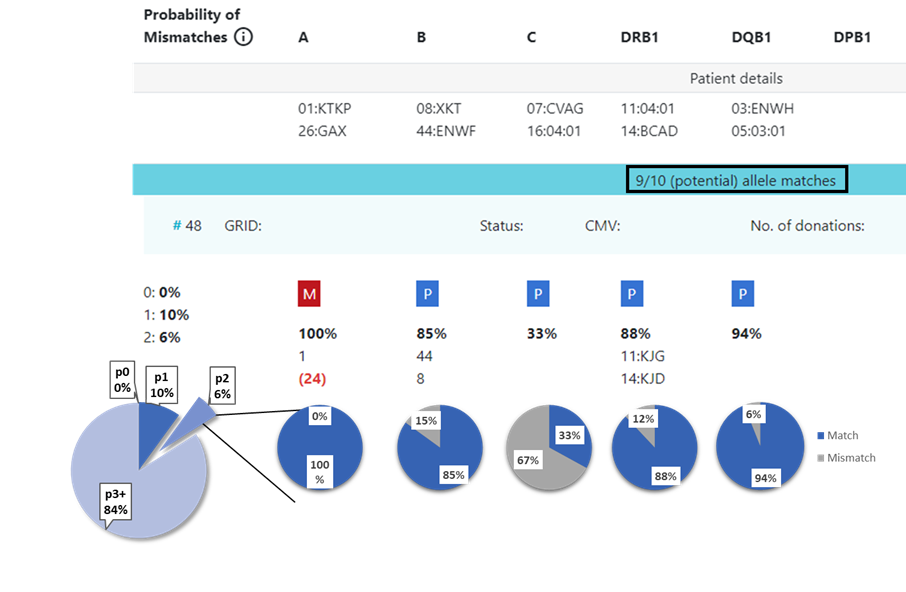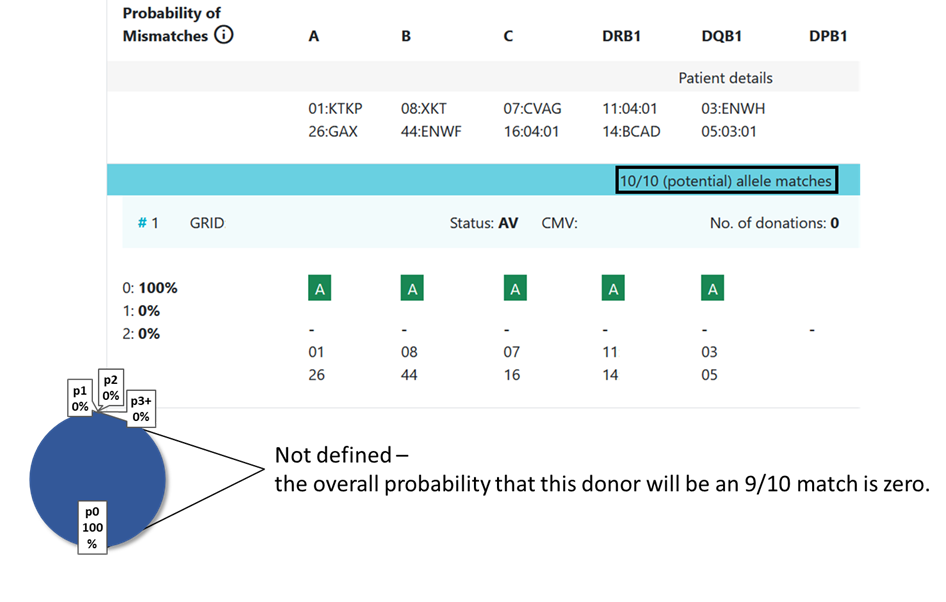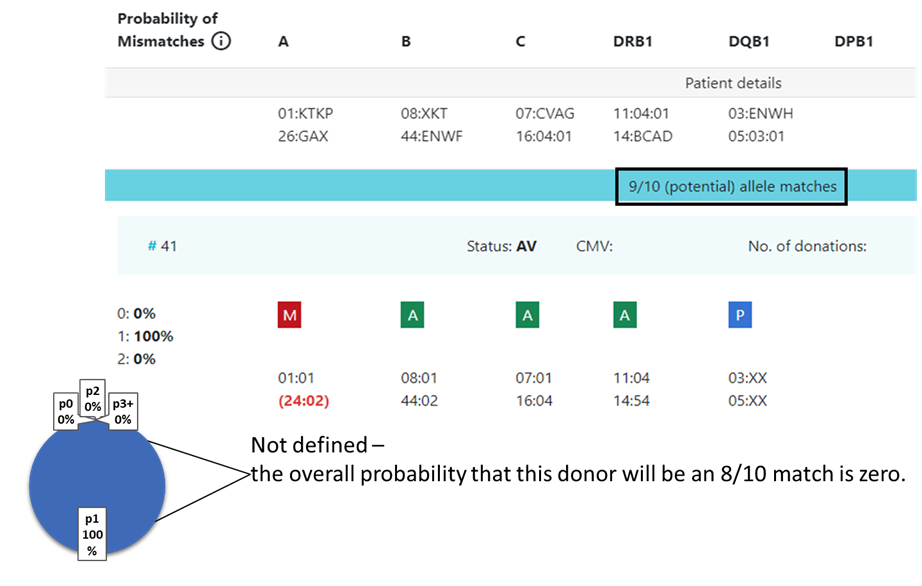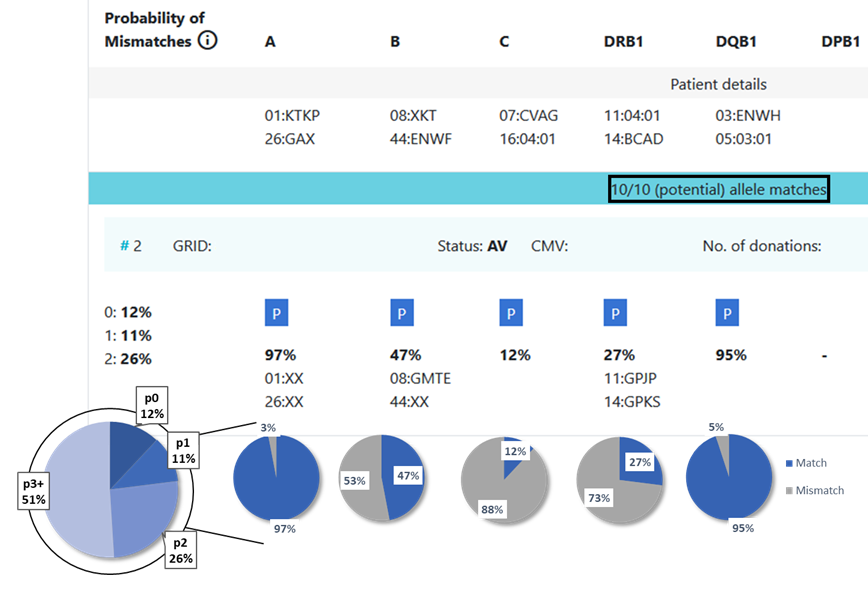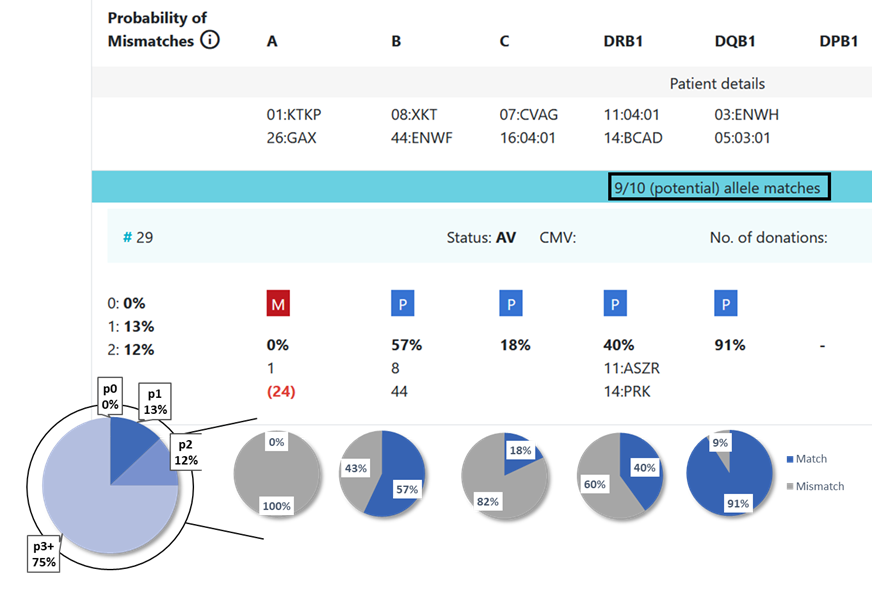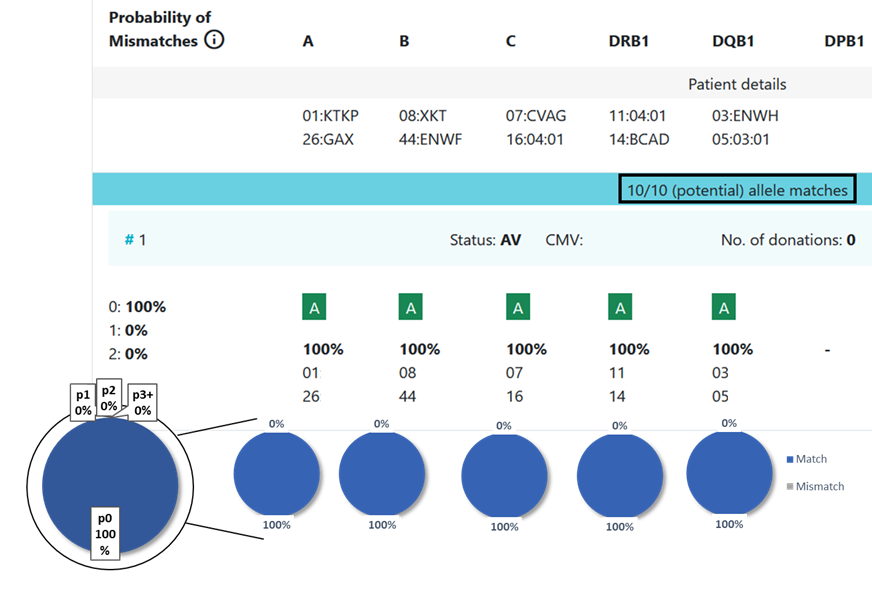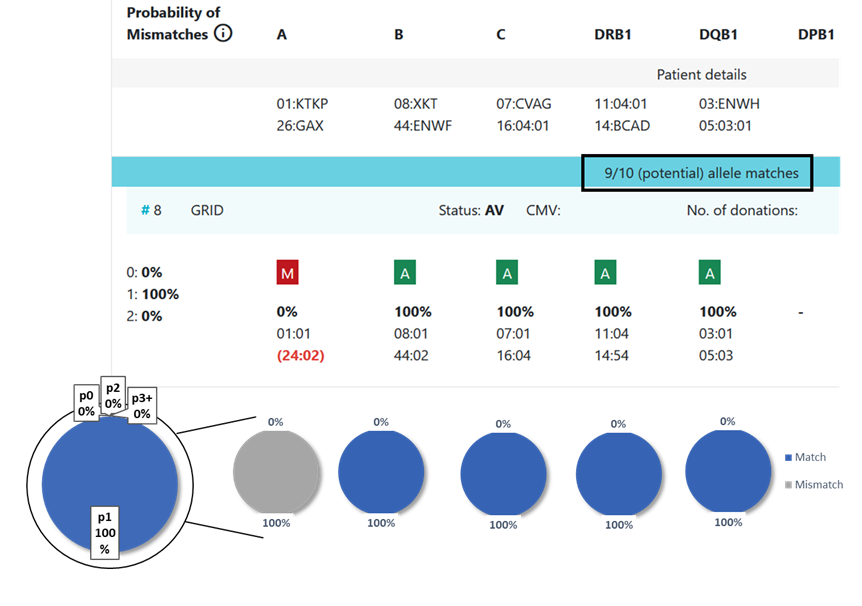On this page we will try to explain some behaviour of the match engines in our Search and Match application.
Antigen Recognition Domain explained
- The antigen recognition domain (ARD) is the binding groove of the HLA peptide. This is the region interacting with the presented antigen and T-cell receptor.
- All alleles that express the same amino acid sequence in this region are considered an allele match.
- The ARD is encoded on:
- exon 2 & 3 for HLA class I
- exon 2 for HLA class II
1. Null allele treatment in Hap-E search
- Null alleles are treated as absent, i.e. the second typing matches as homozygous.
- Null allele matching rules are applied to:
- All high resolution null alleles.
- Null alleles as part of multi allele codes if the null allele is part of a haplotype matching the donor‘s (patient‘s) HLA typing.
- Null allele matching rules are only applied to one typing of the locus.
The following table explains situations where Hap-E performs null allele treatment and whether this is a considered a (potential) match or not.
Patient typing | Donor typing | Hap-E | ATLAS |
|---|---|---|---|
A*03:01, A*01:11N | A*03:01, A*03:01 | matches | matches |
A*03:01, A*01:11N | A*03:01, A*02:125N | matches | matches |
If there is a haplotype compatible with the donor typing containing A*02:125N then | |||
A*03:01, A*01:11N | A*03:01, A*02:GFJM | matches | matches |
A*03:01, A*03:01 | A*03:01, A*02:XX | matches | matches |
A*03:01, A*03:01 | A*03:01, A*01:01:01G | does not match | does not match |
A*01:11N, A*02:125N | A*03:01, A*03:01 | does not match | does not match |
02:GFJM ≜ 02:01/02:105/02:125N
2. Search with two mismatches
Hap-E search | ATLAS search |
|---|---|
| The two mismatches can be on any locus. | The two mismatches can be on any locus. |
3. Donors with DNA and serologic typing
Hap-E search | ATLAS search |
|---|---|
Only the DNA typing information is used for matching. | Only the DNA typing information is used for matching. |
4. Returning donors without typing at DRB1
Hap-E search | ATLAS search |
|---|---|
Yes, when default 'return only donors with typing at DRB1' filter has been switched off and donor does have typing at A+B+C and/or DQB1 loci. | No, because donor without typing at DRB1 are not accepted by ATLAS as valid donors. |
5. Match grades: Overview
Standard match grades | DPB1-specific match grades |
|---|---|
Applied to locus A, B, C, DRB1, DQB1 | Applied to DPB1 only. Uses TCE3 model. |
6. Handling of HLA*DRB3, DRB4, DRB5, DQA1 and other loci not considered for overall match probability
Hap-E search | ATLAS search |
|---|---|
HLA*DRB3/4/5, DPA1, DQA1 and E are validated and shown in the full report, including information whether they are matched or not. | Loci other than A, B, C, DRB1, DQB1 and DPB1 are not validated or imported by ATLAS and therefore also not returned. |
7. Handling of 'NEW' alleles
Handling of new alleles that do not have an official name yet.
For guidelines regarding implementation and reporting of 'NEW' alleles, please read https://onlinelibrary.wiley.com/doi/10.1111/tan.15048
Hap-E search | ATLAS search |
|---|---|
Supported for Donors and Patients. However, Search & Match including Dataupload currently only supports NEW alleles for Patients. Therefore only NEW alleles for patients will be processed in Search & Match. | Currently not supported. |
8. Cord Blood search options
Hap-E search | ATLAS search |
|---|---|
Allele matched:
| Allele matched:
|
|
|
9. Probability display
Hap-E search | ATLAS search |
|---|---|
All probabilities are rounded to integer values. → 0%:
| All probabilities are rounded to integer values. → 0%:
|
10.1 Locus match probabilities: Definition
Hap-E search | ATLAS search |
|---|---|
match, i.e. 10/10, 8/8 or 6/6
mismatch, i.e. 9/10, 7/8 or 5/6
So this probability provides information on which locus the next mismatch will occur. | match, i.e. 10/10, 8/8 or 6/6
mismatch, i.e. 9/10, 7/8 or 5/6
So this probability provides information on the probability that this locus will be a match. |
10.2 Locus match probabilities in search: Not displayed
In some cases the value is not defined and no locus match probability is displayed:
Hap-E search | ATLAS search |
|---|---|
match
mismatch
inexplicable donors
| match
mismatch
|
